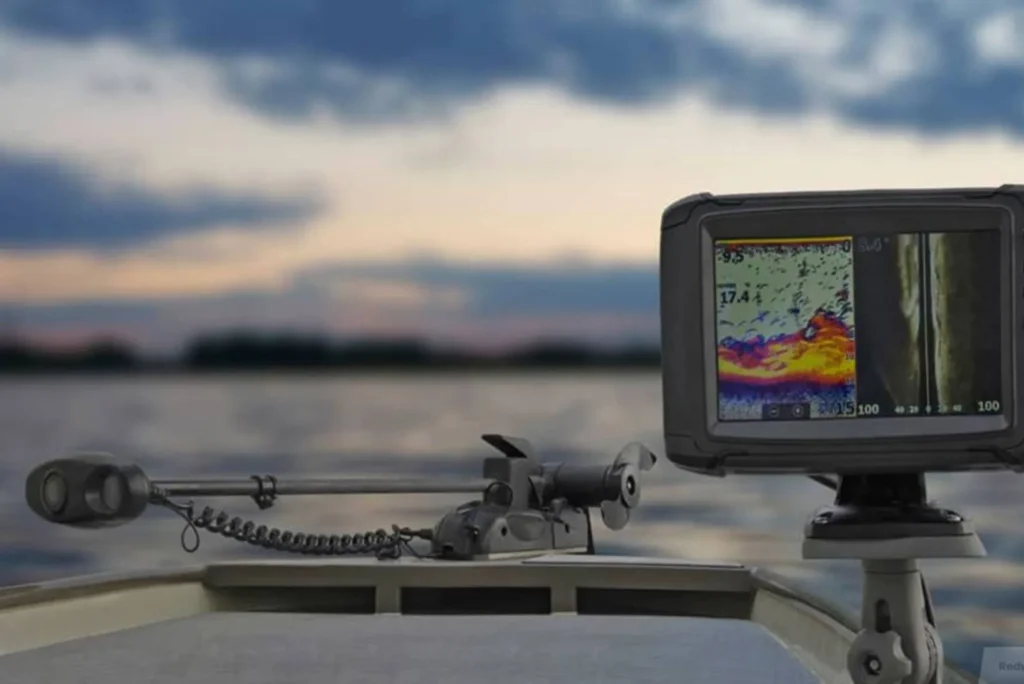Fishing has evolved from simple lines and hooks to high-tech equipment that enhances the experience. One of the most innovative tools in modern fishing is the fish finder. Whether you’re a beginner or an experienced angler, fish finders can revolutionize the way you fish by helping you locate fish underwater with precision. In this article, we’ll dive into everything you need to know about fish finders, including their types, how they work, and how to choose the best one for your needs.
What is a Fish Finder?
A fish finder is an electronic device that uses sonar technology to detect objects underwater, particularly fish. It sends sound waves into the water, and when those waves hit an object, they bounce back to the device, providing information about the size, depth, and shape of the object. Fish finders translate these signals into visual data, typically displayed on a screen, allowing anglers to easily locate fish and assess the underwater environment.
How Do Fish Finders Work?
Fish finders operate using sonar (Sound Navigation and Ranging) technology. The key components of a fish finder are the transducer, display screen, and the control unit.
Transducer: This part sends out sound waves and receives the echoes that bounce back from objects in the water.
Sound Waves: The sound waves travel through the water, and when they encounter objects like fish, rocks, or plants, they reflect back to the transducer.
Data Interpretation: The fish finder processes the returning echoes and converts them into readable data on the screen. This information allows you to see fish, structures, and the bottom of the water body in detail.
Types of Fish Finders
There are several types of fish finders, each with unique features designed for different fishing environments.
Standalone Fish Finders
Standalone fish finders are ideal for those who only need basic fish-finding capabilities. They are typically budget-friendly and offer clear sonar readings without additional mapping or GPS functions. These are perfect for anglers who primarily fish in smaller lakes or rivers.
Fish Finders with GPS
Fish finders combined with GPS functionality are a step up from standalone models. They allow anglers to track their location, mark favorite fishing spots, and navigate unfamiliar waters with ease. This combination of features is great for anglers who often venture into new territories or large bodies of water.
Networked Fish Finders
These advanced fish finders are equipped with networking capabilities, allowing multiple units to be linked together. They can share data with other marine electronics like radar, weather sensors, and satellite radios. This is the best option for professional anglers or those who spend a lot of time on the water.
Portable Fish Finders
Portable fish finders are compact and easy to transport. They’re perfect for anglers who fish from a variety of vessels or want a flexible, easy-to-use solution. Most portable fish finders offer the same features as larger models, including sonar and GPS functions, but in a more travel-friendly design.
Key Features to Look for in a Fish Finder
When choosing a fish finder, it’s important to consider the features that will be most useful for your fishing style. Here are some of the top features to look for:
Display Quality
A clear and high-resolution display is essential for interpreting the sonar data. Look for a model with a bright screen and good resolution, especially if you fish in bright sunlight. Many modern fish finders also come with color displays, which make it easier to differentiate between fish and underwater structures.
Sonar Frequency
Fish finders use sonar frequencies to detect fish, and different frequencies serve different purposes. Higher frequencies (200 kHz and above) offer more detailed images but work best in shallow waters. Lower frequencies (below 200 kHz) provide less detail but are better for deep waters. Some fish finders come with dual-frequency transducers, allowing you to switch between high and low frequencies based on your fishing conditions.
Power Output
Power is another important factor, especially for deep-sea fishing. The power output of a fish finder determines how deep it can scan. If you’re fishing in deep waters, look for a model with higher wattage. For shallow waters, lower power will suffice.
GPS Functionality
If you frequently fish in different locations, having GPS functionality can be a game-changer. Fish finders with GPS allow you to mark hotspots, create maps, and navigate safely. Some models even offer preloaded maps of popular lakes and rivers.
Down Imaging and Side Imaging
Modern fish finders come with advanced imaging features like down imaging and side imaging. Down imaging provides a more detailed view of what’s directly below your boat, while side imaging offers a broader view of the areas to the sides of your vessel. Both features can help you better locate fish and underwater structures.
How to Choose the Right Fish Finder

Selecting the best fish finder for your needs depends on several factors, including your fishing style, the water conditions, and your budget. Here’s a quick guide to help you make the right choice.
Fishing Environment
Consider where you’ll be fishing most often. If you fish primarily in shallow waters like lakes and rivers, a fish finder with a high-frequency transducer will provide the best results. For deep-sea fishing, you’ll need a model with a low-frequency transducer and high power output.
Your Experience Level
If you’re a beginner, start with a simple fish finder that’s easy to operate. A standalone fish finder or a portable model with fewer features can still provide accurate readings without overwhelming you with complex controls. Experienced anglers might benefit from more advanced models with features like GPS and networking.
Budget
Fish finders come in a wide range of prices. Basic models can cost as little as $100, while high-end models with all the bells and whistles can exceed $1,000. Set a budget based on the features that are most important to you and stick to it.
Benefits of Using a Fish Finder
Using a fish finder offers numerous benefits, including:
- Increased Catch Rate: By identifying where fish are located, you can spend more time fishing and less time guessing.
- Better Understanding of Water Conditions: Fish finders help you understand the underwater environment, including structures, vegetation, and depth changes.
- Enhanced Navigation: Models with GPS functionality allow you to navigate the water with ease and return to productive fishing spots with precision.
- Time Efficiency: A fish finder takes the guesswork out of fishing, saving you time by pointing you directly to areas with fish activity.
A fish finder is a valuable tool for any angler looking to improve their fishing experience. Whether you’re a weekend hobbyist or a seasoned pro, fish finders provide crucial data that can make every fishing trip more productive. By understanding the different types of fish finders and their features, you can select the perfect device to meet your needs, ultimately leading to more successful and enjoyable fishing trips.



